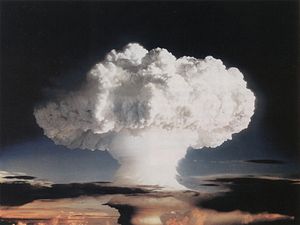Despite its bluster, it appears all but certain that North Korea didn’t successfully detonate its first hydrogen bomb on Wednesday as claimed. Within minutes of Pyongyang’s big announcement via state media, nuclear weapons experts were lining up to pour doubt on the bluster.
But why are they so confident?
While a definitive answer could lie in the analysis of radiation levels, which is yet to run its course, all signs are that whatever exploded at the Punggye-ri nuclear test site at 10 am local time on January 6 was a smaller, less sophisticated device.
The key clue is seismic activity recorded after the blast. H-bombs, which are based on nuclear fusion rather than fission, can be thousands of times more powerful than the atomic weapon that flattened Hiroshima. The quake caused by Wednesday’s blast, measuring 4.85 on the Richter scale, points to a much less powerful weapon. From the estimates produced so far, Pyongyang’s fourth nuclear detonation appears to have had less than half the destructive power of the bomb dropped on Japan.
“The initial seismic activity indicates a yield of about 6-9 kilotons, which is more indicative of a nuclear fission device,” Kelsey Davenport, director for nonproliferation policy at Washington D.C.’s Arms Control Association, told The Diplomat. “If North Korea had tested a hydrogen bomb, it would likely have a significantly higher yield, and thus a higher seismic impact.”
Another indicator is the sheer technical complexity of making a H-bomb. If North did in fact succeed, it would represent an advance few would have predicted, given what is known about its technical abilities.
If successful, North Korea “would have accomplished much more than other nuclear powers with fewer resources and less time,” said Melissa Hanham, a senior research associate at the James Martin Center for Nonproliferation Studies.
A number of experts have pointed to the possibility of a device boosted by a small amount of fusion material. Such a “boosted” weapon would be primarily based on fission technology, as in the case of North Korea’s previous nuclear tests, but would produce a more powerful blast.
For now, the exact nature of North Korea’s latest weapon remains unclear. On Friday, the Korea Institute of Nuclear Safety failed to reach a conclusion after an analysis of air off South Korea’s east coast. It said that the amount of radioactive elements detected was too small to confirm the detonation of a nuclear device.

































